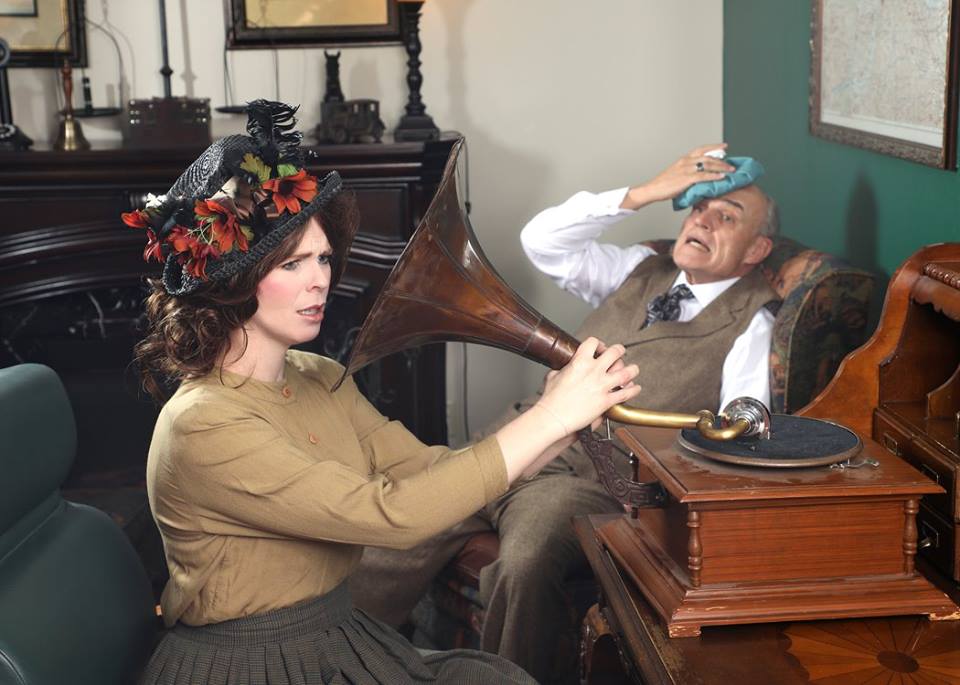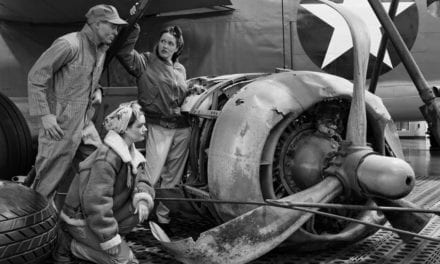OREM — George Bernard Shaw’s most famous play, The Pygmalion, is an examination of the “nature versus nurture” debate of human behavior. Coming clearly on the side of “nurture,” Shaw’s 1913 play tells the story of the impoverished flower seller Eliza Doolittle, who is plucked from the street by Professor Henry Higgins and successfully taught to be a refined English lady. Alan Jay Lerner and Frederick Loewe adapted this play into the classic musical My Fair Lady, which is playing now in a stunning production at the SCERA.

Show closes May 6, 2017.
Foremost of the production’s strengths is the acting talent on display in every scene. Marvin Payne’s performance as Professor Henry Higgins makes the character a condescending elitist who spits insults (like “horribly dirty” and “barbarous wretch”) at Eliza in his early scenes. But Payne gives Henry a soft core from his earliest scenes, which makes the character’s own transformation in the play believable. Mindy Smoot Robbins played Eliza with a sweet tenderness that made it easy to feel compassion for her as she endured Higgins’s endless lessons on diction and comportment. I appreciated the fortitude Robbins gave Eliza in her body language, which made it clear that Eliza could hold her own against any man, whether it was her alcoholic father or the domineering professor. Robbins also has a superb singing voice, best shown in “Show Me” and “Without You.” The only drawback of Robbins’s performance was that the score was not challenging enough to let the audience more than a glimpse of her vocal talents.
As Freddy Eysnford-Hill, a young man smitten by Eliza, Gabe Spencer gave his character an earnest sweetness that made his overtures of love plausible—and not some childish crush. Spencer also has a singing voice that is supremely easy to listen to, with the right amount of vibrato that does a great service to the long notes of “On the Street Where You Live.” Marc Haddock played Colonel Pickering, a role that can easily degenerate into becoming little more than a character for Professor Higgins to talk to. Haddock made Pickering important in his own right, injecting sense, calm, and dignity into scenes that—without his presence—could easily look like emotional abuse to modern eyes. But no one on stage was more admirable than Robert Holcombe as Alfred P. Doolittle, Eliza’s father. Holcombe made Alfred eccentric, yet lifelike, as he discussed his unconventional viewpoints on marriage, class, and life. Additionally, each of his songs was unvarnished fun as he nimbly danced with the ensemble, often with effective bits of stage business that added humor.

Mindy Smoot Robbins as Eliza Doolittle and Marvin Payne as Henry Higgins. Photo by Mark A. Philbrick.
While having strong leads is important in any play, one of the aspects that made this My Fair Lady so enjoyable was the deep bench of talent in the cast. Unlike most amateur casts, there were few—if any—noticeable differences in the quality of performances from the lead actors, the supporting actors, and the ensemble. Even after three hours of scrutiny, I could not find a weak member of the ensemble.
Helming this talented group of artists is director Chase Ramsey, whose only directorial misstep occurred at the very beginning of the show when he had the ensemble pantomime some street scenes during the overture. Unless written into the script (e.g., West Side Story, The Fantasticks), this gimmick rarely works, and it shows a lack of trust in the audience’s ability to sit through an overture. But after these first few minutes of the play, Ramsey’s directing fell into a pattern of creating scenes that were natural and effective. Ramsey has a knack at using the entire stage without forcing actors into awkward blocking or unnatural movement. He also demonstrates a sensitivity towards the characters’ emotions, without which My Fair Lady would be a tough show to sit through.

Mindy Smoot Robbins as Eliza Doolittle. Photo by Mark A. Philbrick.
Assisting Ramsey was Tyne Valgardson Crockett, whose choreography can only be described as joyous. Whether it was the playful “With a Little Bit of Luck,” the formal waltz at the end of the first act, or the exuberant “The Rain in Spain,” every step of Crockett’s dances were a pleasure to watch. The dances weren’t particularly athletic, but the perfect match of scene, music, and dance made every dance number a highlight of the production.
The most notable visual aspect of the production was the set designed by M’Liss Tolman, especially for Henry’s study, which clearly conveyed the character’s upper class origins, yet did not display an inappropriate level of opulence. The multiple levels, pleasant color scheme, and details on the wall made the set a nice place to watch some of the play’s most critical scenes. I also commend Kelsey Seaver for the many costumes that spanned the entire range of the economic classes of Edwardian England. These costumes contributed greatly to the creation of a believable My Fair Lady.
Although the rave review may make it hard to believe, I arrived at My Fair Lady with mediocre expectations. It is a difficult show to execute, the score is staid and predictable (consisting solely of one 8-measure phrase after another), and the ending can be upsetting to modern eyes and to Shaw purists. Yet, the SCERA cast and crew blew away all my skepticism about My Fair Lady. In fact, I’ll wager readers that they, too, can enjoy the SCERA’s production.






